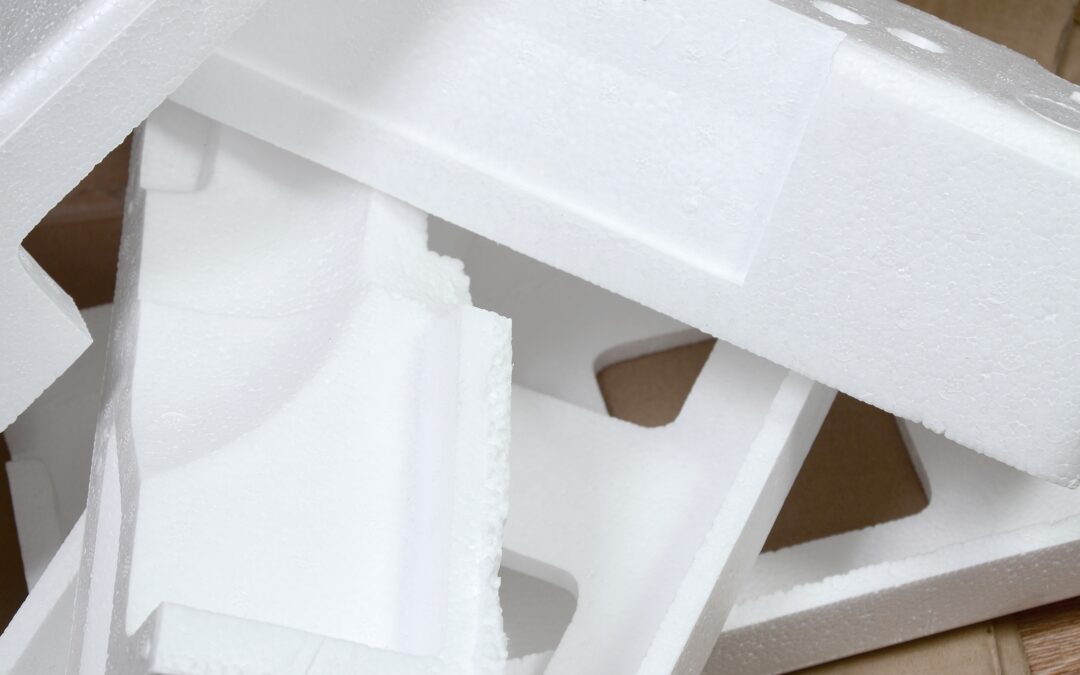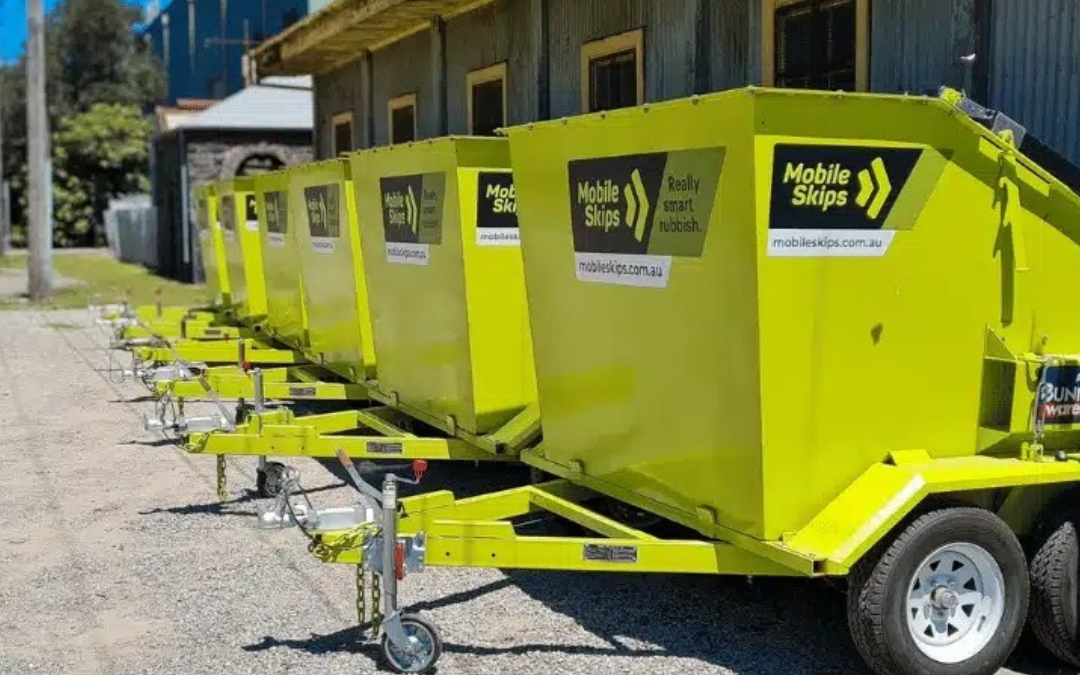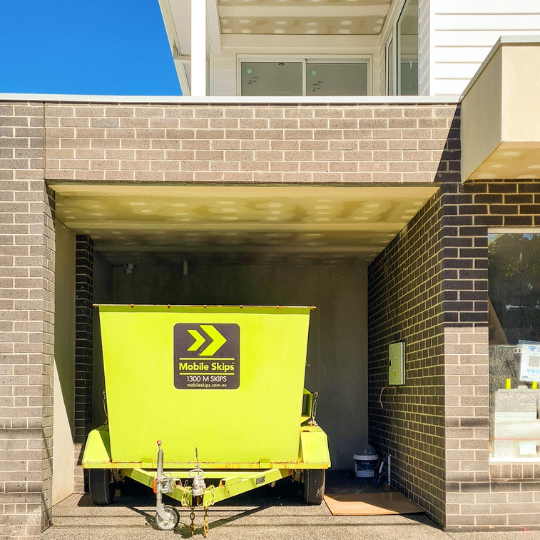Why Proper Disposal of Roofing Waste Is Important
Roofing renovations generate a significant amount of waste, including shingles, tiles, metal sheets, and other debris. Proper disposal is crucial to maintaining a safe worksite and minimising environmental impact. By planning your roofing waste disposal, you’ll ensure a smooth renovation and avoid unnecessary delays or hazards.
Types of roofing waste often include:
| Type | Examples | Special Handling |
|---|---|---|
| Shingles & Tiles | Asphalt shingles, ceramic tiles, slate, clay tiles | Separate reusable or recyclable materials |
| Metal Sheets | Corrugated metal sheets, flashing, gutters | Sort for recycling |
| Wood & Underlayment | Wooden beams, underlayment, plywood | Remove nails and screws |
| Fasteners | Nails, screws, metal fasteners | Gather separately for safe disposal |
Proper disposal methods are crucial for different types of roofing renovation waste, and some materials require professional handling (EPA Victoria). The environmental benefits of reusing or recycling roofing materials are significant. This not only reduces the waste going to landfill but also supports sustainability.
Consider donating surplus materials to local organisations or planning for the deconstruction of reusable materials (The Roof Doctors). Proper disposal not only aids in a smoother renovation but promotes eco-friendly practices and community support.
Always use approved waste disposal services for hazardous materials such as asbestos or treated wood. For detailed guidelines on handling such materials, consult local authorities and specialist waste disposal companies. Proper disposal ensures the safety and health of those involved and contributes to responsible renovation practices.
Types of Roofing Waste Generated During Renovations
Asphalt Shingles and Roof Tiles
Roofing renovations generate a variety of waste materials, each requiring appropriate disposal methods. One of the most common types of roofing waste includes asphalt shingles and roof tiles.
What It Includes
- Asphalt shingles
- Ceramic tiles
- Slate
- Clay tiles
Asphalt shingles are the most commonly used roofing material but have a relatively short lifespan. The manufacturing of these materials also involves the release of harmful substances into the environment. Separating reusable or recyclable tiles from general debris is a sustainable practice that reduces environmental impact and can also provide cost efficiency (Quality Roofing and Maintenance).
Tip
Separate reusable or recyclable tiles from general debris for more sustainable disposal.
Metal Roofing Sheets
Metal roofing waste also constitutes a significant portion of debris during roofing renovations. These materials are easier to recycle, thus reducing their impact on landfills.
What It Includes
- Corrugated metal sheets
- Flashing
- Gutters
Metal roofing materials like steel, aluminum, and copper can be fully recycled (Roofing World AL). Taking these sheets to a scrap metal yard or a recycling center can significantly minimise landfill waste.
Tip
Metal roofing materials can often be recycled, so sort them out for proper recycling.
Wood and Underlayment
The wood and underlayment category of roofing waste is important to handle carefully, as these materials can be heavy and cumbersome.
What It Includes
- Wooden beams
- Underlayment
- Plywood
Untreated wood from roofing structures can be repurposed or recycled, which makes it an eco-friendly choice. Removing nails and screws from wood helps make the disposal or recycling process safer and easier.
Tip
Remove nails and screws from wood to make disposal or recycling easier and safer.
Nails, Screws, and Fasteners
The final category of roofing waste includes smaller but potentially hazardous items like nails, screws, and fasteners.
What It Includes
- Metal fasteners
- Screws
- Nails from old roofing materials
Gathering these items separately ensures safe disposal and helps avoid injury. Ensuring these metal fasteners are correctly disposed of is not only a safety measure but also maintains a cleaner work site, contributing to the sustainable waste removal.
Tip
Gather these items separately to avoid injury and ensure safe disposal.
For more on handling renovation waste, including specific disposal advice, you can visit removing renovation waste. Whether it’s a kitchen renovation waste or bathroom renovation waste, planning ahead ensures a smooth process.
Best Practices for Roofing Waste Disposal
Properly disposing of roofing renovation waste is crucial for maintaining a safe worksite and minimising environmental impact. Here are some best practices to follow:
Use a Skip Bin for Efficient Removal
What It’s Good For: Large amounts of roofing materials like shingles, tiles, and underlayment
Skip bins are a practical solution for the efficient removal of substantial roofing materials. Whether it’s shingles, tiles, or underlayment, utilizing a skip bin simplifies waste management and keeps your worksite organised. Mobile Skips’ 4 cubic metre bins are particularly effective for small to medium roofing projects, but for larger jobs with heavier materials, you may need a bigger skip bin (Bluebeam Blog).
| Bin Size | Ideal For |
|---|---|
| 2 Cubic Metres | Small Renovations |
| 4 Cubic Metres | Medium Roofing Projects |
| 6+ Cubic Metres | Large and Heavy-Duty Roofing |
Separate Recyclable Materials
What It Includes: Metal sheets, tiles, and wood
Segregating recyclable materials from non-recyclable ones is a key step in eco-friendly disposal. Roofing materials such as metal sheets, tiles, and wood have significant recycling potential. By separating these materials, you not only contribute to environmental conservation but also make the disposal process more efficient.
| Material | Recyclable |
|---|---|
| Metal Sheets | Yes |
| Tiles | Yes |
| Wood | Yes |
| Asphalt Shingles | Yes |
Dispose of Hazardous Roofing Materials Properly
What It Includes: Old insulation, asbestos, or roofing materials treated with chemicals
Handling and disposing of hazardous roofing materials like old insulation, asbestos, or chemically-treated roofing require extra caution. Contacting a professional hazardous waste disposal service is essential for safe and compliant disposal (Equipter). Never attempt to remove or dispose of these materials yourself.
| Hazardous Material | Disposal Method |
|---|---|
| Asbestos | Professional Hazardous Waste Service |
| Old Insulation | Professional Hazardous Waste Service |
| Chemically Treated Roofing | Professional Hazardous Waste Service |
For further information on roofing waste management and disposal, explore our articles on renovation waste and removing renovation waste. Additionally, learning about sustainable waste removal brings long-term benefits for you and the environment.
Recycling Options for Roofing Waste
Recycling roofing renovation waste is not only essential for the environment but also for conserving resources. Here we explore how you can recycle common roofing materials like asphalt shingles, metal roofing, and wood beams.
Asphalt Shingles
Asphalt shingles are widely used in roofing but have a relatively short lifespan, leading to frequent replacements and increased waste (Roofing World AL). Fortunately, old asphalt shingles can be recycled into road paving materials, reducing the release of harmful substances into the environment.
What Can Be Recycled:
- Old asphalt shingles
Tip:
Check if your local recycling center accepts shingles. Arrange a drop-off for your roofing waste to ensure it gets recycled. By doing so, you help conserve valuable resources (Your Roof Restoration). For more details, see our section on removing renovation waste.
Metal Roofing
Metal roofing is considered more environmentally friendly due to its manufacturing process, which is less energy-intensive compared to asphalt shingles (Roofing World AL). Metal materials like steel, aluminum, and copper are highly durable and can be fully recycled, thus minimizing landfill waste.
What Can Be Recycled:
- Metal roofing materials (steel, aluminum, copper)
Tip:
Take your metal roofing sheets to a scrap metal yard or recycling center. To further contribute to sustainability, learn more about sustainable waste removal.
| Metal Type | Recycling Location |
|---|---|
| Steel | Local scrap metal yard |
| Aluminum | Local recycling center |
| Copper | Scrap metal facility |
Wood and Beams
Untreated wood from roofing structures can be repurposed or recycled. It’s vital to remove any embedded nails, screws, or other metal fasteners to make the wood easier to process and safer to handle.
What Can Be Recycled:
- Untreated wood, wooden beams, plywood
Tip:
Remove any metal fasteners from the wood before taking it to a recycling facility. This simple step helps ensure the wood can be efficiently recycled or repurposed. For projects involving wood, visit our section on builders waste.
By recycling these materials, you can significantly reduce the environmental impact of your roofing renovation. For more on managing waste from different types of renovations, take a look at our resources on home renovation waste, kitchen renovation waste, and bathroom renovation waste.
When a Mobile Skips Bin Isn’t Suitable for Roofing Waste
Heavy Roofing Materials
When dealing with roofing renovation waste, understanding when a Mobile Skips bin isn’t suitable is essential for efficient waste removal.
What It Includes: Large amounts of tiles, slate, or heavy metal roofing materials
Heavy roofing materials such as tiles, slate, and metal sheets generate substantial waste. Projects involving significant volumes of these materials may exceed the weight limits of standard Mobile Skips bins.
| Heavy Roofing Materials | Estimated Weight (kg per m²) |
|---|---|
| Clay or Concrete Tiles | 60 – 80 |
| Slate Tiles | 20 – 35 |
| Metal Roofing Sheets | 5 – 10 |
Why It Matters: Mobile Skips can handle light to medium roofing waste, but for projects involving heavy loads (e.g., more than 5 wheelbarrows of materials), a larger, heavy-duty skip bin may be necessary.
Mobile Skips bins are designed for light to medium loads. Exceeding their capacity with heavy materials can render them unsafe for transport and potentially incur additional fees. For example, more than five wheelbarrows of roofing tiles can quickly surpass the recommended weight limits.
Tip: If your roofing renovation generates a large volume of heavy materials, consider renting a specialized skip bin designed to handle heavy-duty waste.
For extensive roofing projects, especially those involving heavy-duty materials, it’s advisable to rent a larger, heavy-duty skip bin. These bins are specifically designed to accommodate the volume and weight of materials generated during substantial renovations. This will not only ensure safe and efficient disposal but also help maintain a clean and hazard-free worksite.
By planning your roofing renovation waste disposal in advance and selecting the appropriate skip bin, you can streamline your project and mitigate unnecessary delays or hazards. For more information on managing various types of renovation waste, consider exploring our related articles on removing renovation waste and sustainable waste removal.
Safety Tips for Roofing Waste Removal
When handling roofing renovation waste, safety should be your top priority. Here are essential tips to ensure you stay safe during the process.
Wear Protective Gear
Why It’s Important: Sharp debris, nails, and heavy materials can cause injury.
Tip: Always wear gloves, eye protection, and a hard hat when handling roofing waste. Proper protective gear shields you from potential hazards such as sharp nails, splinters, and falling debris. Safety gear can also include steel-toed boots and high-visibility clothing if working in areas with heavy machinery or during low-light conditions.
Avoid Overloading Your Skip Bin
Why It’s Important: Overloading can make the bin unsafe to transport and may result in additional fees.
Tip: Stick to the fill line and pack materials efficiently to prevent overloading. Proper loading ensures the skip bin is safe to move and keeps waste from becoming a hazard. Be sure to distribute the weight evenly and avoid piling materials too high. This not only keeps the bin stable but also helps in following local waste management regulations.
| Material | Average Weight (kg) per Unit | Recommended Skip Bin Size |
|---|---|---|
| Asphalt Shingles | 36 | 4 cubic metre |
| Metal Sheets | 15 | 4 cubic metre |
| Wooden Beams | 20 | 6 cubic metre |
Handle Hazardous Materials with Care
Why It’s Important: Materials like asbestos or treated wood can be dangerous if not disposed of properly.
Tip: Never attempt to remove or dispose of hazardous materials yourself—always call a licensed waste disposal service. Hazardous roofing materials can pose significant health risks (e.g. asbestos) and require specialized handling. Contact professionals for hazardous waste disposal to avoid contamination and ensure safety.
For more information on how certain materials should be handled, see our guide on sustainable waste removal and removing renovation waste.
Following these safety tips can help minimise risks and ensure a safer and more efficient roofing renovation waste removal process. Remember, planning ahead and adhering to safety protocols is crucial in managing your renovation waste.
One Last Tip: Plan for Roofing Waste Removal Early
Roofing projects generate a significant amount of waste, making it essential to have a disposal plan in place before you start. By scheduling your waste removal service in advance, you can ensure a smooth renovation process without unnecessary delays or hazards.
Roofing projects generate a lot of waste, so it’s important to have a disposal plan in place before you start.
Pro Tip: Schedule your Mobile Skip or other waste removal service to be delivered before demolition begins. This will keep your site clear and safe, ensuring a smooth roofing renovation process.
Planning ahead involves estimating the volume and weight of the waste materials, such as shingles, tiles, wooden beams, and metal sheets. Accurate estimation helps in choosing the right size of skip bin for your project, preventing overfilling and ensuring efficient waste management (The Roof Doctors).
| Waste Type | Expected Volume (Cubic Metres) |
|---|---|
| Asphalt Shingles and Roof Tiles | 2-3 |
| Metal Roofing Sheets | 1-2 |
| Wood and Underlayment | 1-1.5 |
| Nails, Screws, and Fasteners | 0.5 |
Recycle as much material as possible. For example, old asphalt shingles can be recycled into road paving materials, and metal roofing materials can be taken to a scrap metal yard. This not only minimizes landfill waste but also promotes sustainable waste removal.
Ensure safe disposal of hazardous materials. Materials such as old insulation or asbestos should be handled by a professional hazardous waste disposal service.
For more tips on managing waste from home renovation projects, visit our page on removing renovation waste. Planning ahead for waste removal keeps your roofing project on track, maintaining a safe and efficient worksite from start to finish.
Final Thoughts on Disposing of Roofing Renovation Waste
Properly managing your roofing renovation waste is key to a successful project. By using Mobile Skips for smaller projects and recycling as much material as possible, you’ll reduce the environmental impact of your renovation. Skip bin hire can efficiently handle the generated rubbish, ensuring a tidy and safe worksite (Mobile Skips). For larger or heavier jobs, consider a specialized skip bin to ensure safe and efficient disposal.
How to Choose the Right Skip Bin Size and Type
By accurately assessing waste volume and weight, you can choose the appropriate skip bin size, preventing overfilling and ensuring efficient waste management. Here’s a quick guide on which skip to use:
| Project Type | Recommended Skip Bin Size |
|---|---|
| Small Renovations | 4 cubic metres |
| Medium Renovations | 6 cubic metres |
| Large Renovations | 10 cubic metres |
For heavy roofing materials like tiles and metal sheets, a larger, heavy-duty skip bin is necessary to accommodate the weight. Be mindful of the types of materials you’ll be disposing of to prevent overloading.
Recycling and Reusing Roofing Materials
Recycling and reusing materials not only reduces waste but also supports eco-friendly practices. Separate materials like metal sheets, asphalt shingles, and wood for recycling.
- Metal Roofing: Fully recyclable; take to a scrap metal yard.
- Asphalt Shingles: Recyclable into road paving materials; check local recycling centers.
- Wood and Beams: Untreated wood can be repurposed or recycled; remove metal fasteners beforehand.
Sustainable Waste Removal
Consider sustainable approaches to waste removal by donating excess and reusable materials to local organizations. Engage in community support and promote environmental stewardship,
Proper planning and organisation can make your roofing renovation project smoother and more environmentally friendly. For further advice on handling home renovation waste or tips on removing renovation waste, follow our comprehensive guides. Whether you’re dealing with kitchen renovation waste or need guidance on bathroom renovation, we have you covered.






